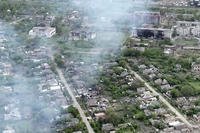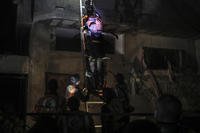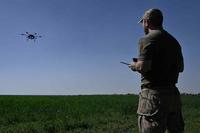The Marine Corps expects to send its first squadron of F-35Bs to Japan in January ahead of a deployment with the 31st Marine Expeditionary Unit.
But there's nothing stopping the Marines' two operational squadrons of 5th-generation fighters from deploying earlier if called upon, Marine Corps Deputy Commandant for Aviation Lt. Gen. Jon Davis said Friday.
"We have a unit that's ready to go right now," Davis told Military.com following an event at the American Enterprise Institute in Washington, D.C. "If we think we need to do that, we're ready to do that."
Davis alluded to the Marines' F-35 deployment plan, which calls for the permanent relocation of Marine Fighter Attack Squadron 121 from Yuma, Arizona, to Japan at the start of next year and two subsequent F-35 deployments with Marine Expeditionary Units by 2018.
If a combatant commander calls for a unit to deploy for combat or for another contingency mission, Davis said it would be necessary to re-evaluate those plans.
"Do we keep that on track, or do we do something different," he said. "That's up to the national command authorities."
In an address to the think tank, Davis bragged that the F-35 had been "phenomenally successful" in recent tests that required the aircraft to locate and destroy targets and face off against notional enemy fighters.
"We've got a jewel on our hands," he said. "Everyone who flies a pointy-nose aircraft in the Marine Corps wants to fly this."
Earlier this month at the Farnborough International Airshow, Davis' deputy, Col. William Lieblein, said the Corps plans to deploy F-35 squadrons aboard three MEUs and aboard one aircraft carrier by 2021.
Davis confirmed Friday that, in addition to the deployment of VMFA-121 from Japan with the 31st MEU, a second squadron would go out on a pump with a West Coast-based MEU in 2018.
Davis' comments align with those of Air Force Gen. Hawk Carlisle, head of Air Combat Command, who told reporters this month that he would be ready and willing to deploy the F-35A Air Force variant of the aircraft at the behest of the relevant combatant commander as soon as the Air Force declares initial operational capability, which could happen as soon as early August.
The comments refute criticisms about aircraft software glitches and technical issues, including a dense report released this year by the Pentagon’s director of Operational Test and Evaluation, which raised concerns about maintenance downtime and software delays.
"Some of the technical challenges facing the program will take years to correct, and as a result, the F-35’s operationally demonstrated suitability for combat will not be known until 2022 at the earliest," staff with the Project on Government Oversight said of the report in a blog post.
On Friday, Davis noted that the F-35 was not only a capabilities boon for the Marine Corps, but an opportunity to retire aging AV-8B Harriers and F/A-18 Hornets that are nearing the end of their service lives.
The Marine Corps recently pulled 23 Hornets out of the "boneyard" at Davis-Monthan Air Force Base in Arizona to help the service maintain its combat and training presence until more F-35B squadrons are activated. The Marine Corps currently has two active F-35 squadrons, with three more planned to stand up by 2020.
"We’re going to get out of those airplanes as quick as we can," Davis said. "And the only way we can get out of them is when the F-35s arrive."









